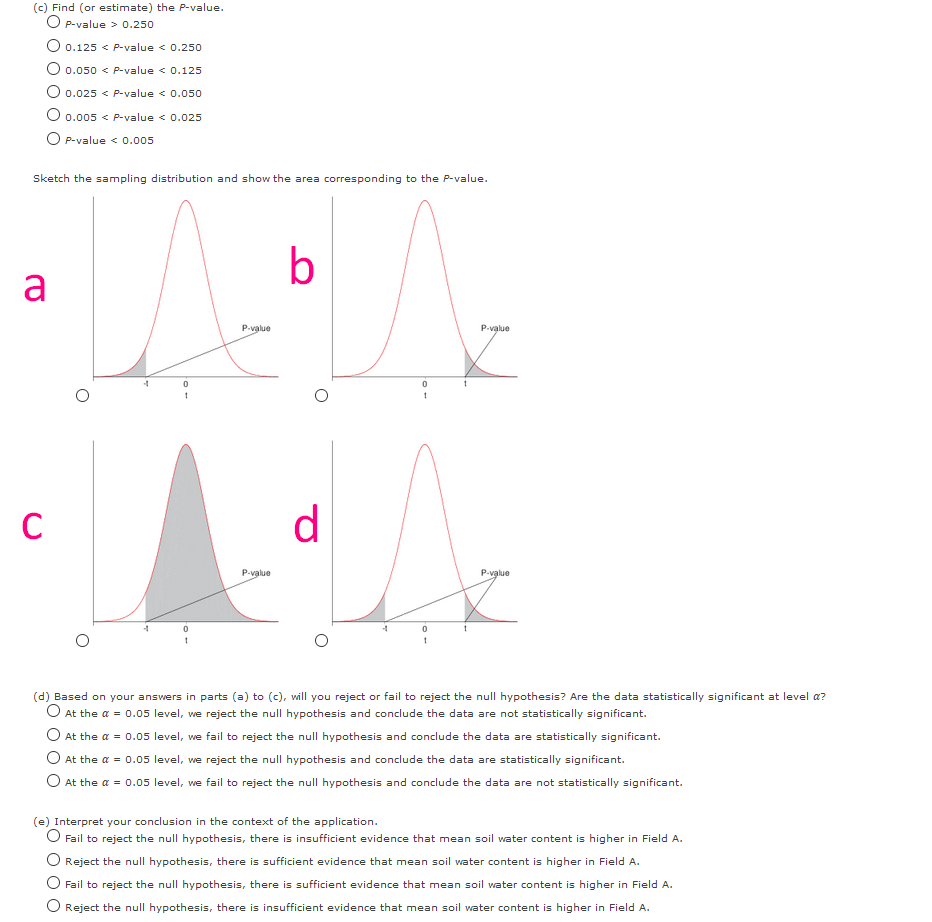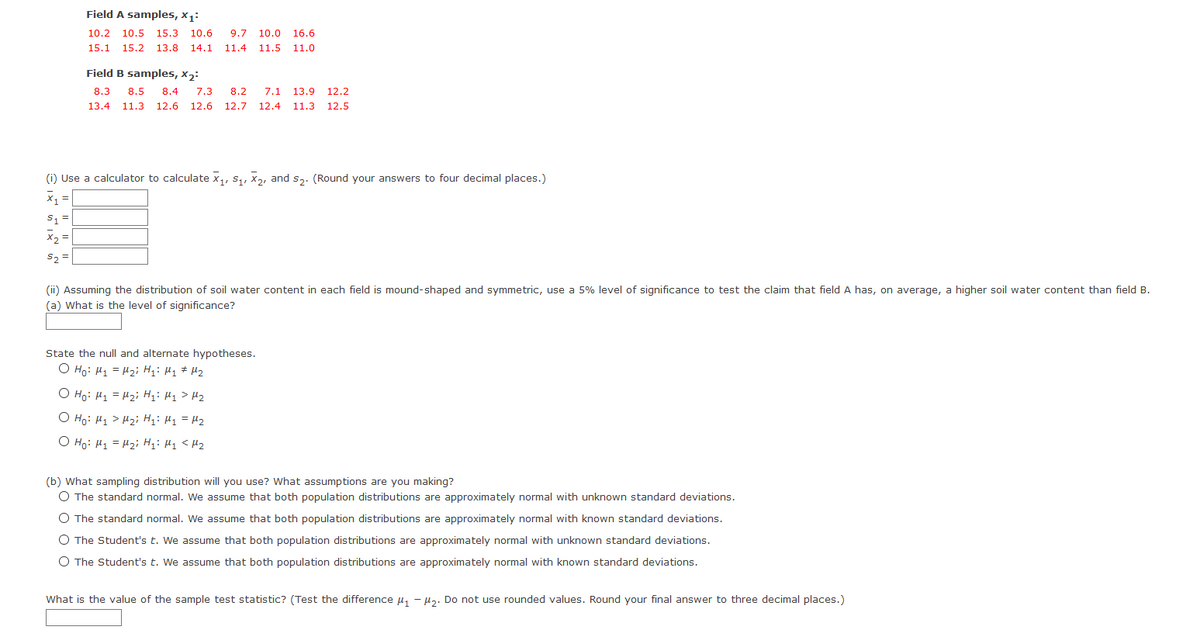(c) Find (or estimate) the Pvalue. O P-value > 0.250 O 0.125 < P-value < 0.250 O 0.050 < P-value < 0.125 O 0.025 < P-value < 0.050 O 0.005 < P-value < 0.025 O P-value < 0.005 Sketch the sampling distribution and show the area corresponding to the P-value. a Puglue Pvalue d. Pvalue P-value (d) Based on your answers in parts (a) to (c), will you reject or fail to reject the null hypothesis? Are the data statistically significant at level a? O At the a = 0.05 level, we reject the null hypothesis and conclude the data are not statistically significant. O At the a = 0.05 level, we fail to reject the null hypothesis and conclude the data are statistically significant. O At the a = 0.05 level, vwe reject the null hypothesis and conclude the data are statistically significant. O At the a = 0.05 level, we fail to reject the null hypothesis and conclude the data are not statistically significant. (e) Interpret your conclusion in the context of the application. O Fail to reject the null hypothesis, there is insufficient evidence that mean soil water content is higher in Field A. O Reject the null hypothesis, there is sufficient evidence that mean soil water content is higher in Field A. O Fail to reject the null hypothesis, there is sufficient evidence that mean soil water content is higher in Field A. O Reject the null hypothesis, there is insufficient evidence that mean soil water content is higher in Field A.
Angles in Circles
Angles within a circle are feasible to create with the help of different properties of the circle such as radii, tangents, and chords. The radius is the distance from the center of the circle to the circumference of the circle. A tangent is a line made perpendicular to the radius through its endpoint placed on the circle as well as the line drawn at right angles to a tangent across the point of contact when the circle passes through the center of the circle. The chord is a line segment with its endpoints on the circle. A secant line or secant is the infinite extension of the chord.
Arcs in Circles
A circular arc is the arc of a circle formed by two distinct points. It is a section or segment of the circumference of a circle. A straight line passing through the center connecting the two distinct ends of the arc is termed a semi-circular arc.
The pathogen Phytophthora capsici causes bell peppers to wilt and die. Because bell peppers are an important commercial crop, this disease has undergone a great deal of agricultural research. It is thought that too much water aids the spread of the pathogen. Two fields are under study. The first step in the research project is to compare the
I need help with sketching (c) (d) and (e)


Step by step
Solved in 2 steps with 12 images






